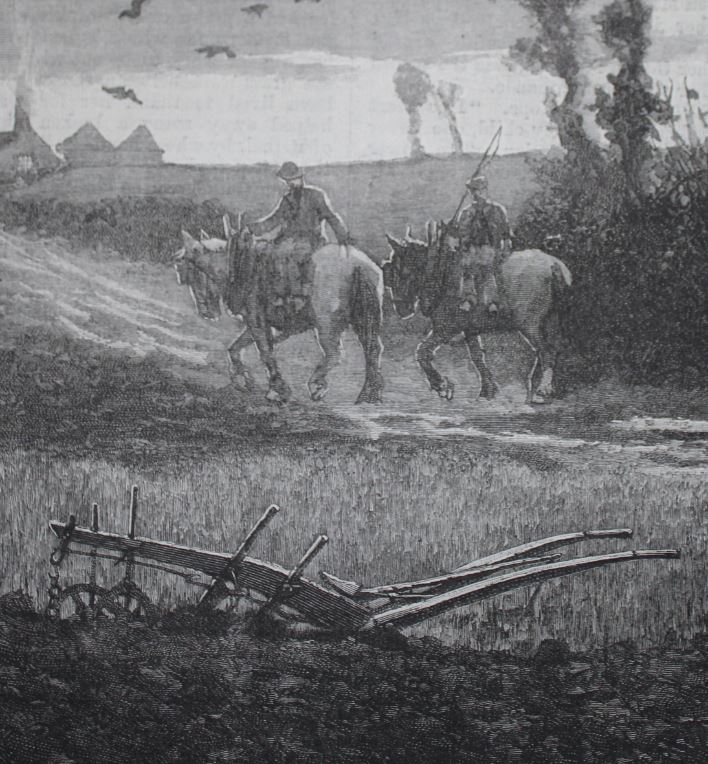John Brown was born in the year 1739 in Fordham, a small but thriving town in Cambridgeshire, England.
Fordham is a small village but its population has fluctuated over the years. It has a history of habitation going right back to the Bronze Age. The Romans built one of their famous roads through it, from the market towns of Newmarket to Ely. A Gilbertine Abbey was built here in the 13th century and various manors popped up over the next few centuries. Always a farming place, the villagers worked on the various properties and kept their own stock on the commons.
If ever one is looking for an iconic English village, Fordham is worth examining.
Even by 1739, when our John was born to unknown parents, every foot of ground had been walked on in his locality, over and over again. Digging channels and paths often led to the discovery of ancient wells now covered over, or stone blades from a distant past they could not really conceive of. The occasional references in old newspapers are very intriguing.
The authors of the day thought the place was boring. A dull old country community full of farming yokels and squires with a passion for cattle. The kind of squire, I would imagine, who had a portrait made of a prize bull to hang over the fireplace. Those people existed.
We don’t know much about John, but he was probably a home loving type like his descendants. The Browns of Fordham were comfortably off and appear to have lived on the same property for several generations. He was a farmer, no doubt he started on the farm at a young age and knew just what he had to offer when he went looking for a wife. The (hopefully) lucky lady was Mary Boon. I have not located her birthplace but according to her age at death she was born in 1745, so just six years younger than her husband.
Fordham is annoyingly close to the Suffolk border and it is necessary to search both counties for records. I have not obtained the correct records for Suffolk yet, so I’m hoping Mary was born there. She might have been raised in Fordham. Being on the road from Ely to Newmarket, there were people going through and there was a toll gate at Fordham. She probably came from somewhere nearby.
John Brown and Mary Boon were married in 1760 in Fordham. Due to the transcription method chosen by my subscription package, it is not possible to search for children by parent names. I have only located children by guessing at a likely name and searching for it. Then it will show me who that child’s parents were. A lengthy process.
Until quite recently I had only three children for John and Mary – sons John born 1771, Benjamin born 1785 and William born 1786. There were clearly going to be more. I’d bet on a Mary in there somewhere. Perhaps half the children died young and siblings were given the same name.
Researching John and Mary Brown in the 1760s is not a task for the faint-hearted. I can’t take the credit for the initial research, it was a man named Ian Woolley (his real name) who first located these records. He was a man who achieved wonders for Tasmanian genealogists and I suspect has now passed on since he was an old man twenty years ago.
I have, however, built on his work a little, since the internet popped into existence.
I have spent six months working on a DNA match with a lady, and we thought our connection might be in northern Ireland. I have ancestors from Fermanagh, she had ancestors from Tyrone. She’s working hard on those ancestors. It seemed logical to me, but when we couldn’t find it I looked further, and found one Ann Brown way back in her tree, born in 1768 based on age at death. Ann Brown appeared in many trees, married to John Burling in 1784, but never with any parents. However, she was married at Bottisham, nine miles away from Fordham.
After investigating, a baptism turned up for Ann Brown child of my John and Mary, in 1766 in Fordham. John and Ann Burling used the family names and one of my other Browns show up in Bottisham not long after their wedding. It fitted together well.
This was a case where DNA testing has really helped my family tree. I’d never have found Ann, and Ann’s descendants would never have looked in Fordham for her. There are too many little villages and parishes to scour them all for Browns.
I am a descendant of Benjamin who was born in 1785. Benjamin’s son Robert was a convict who was transported to Australia. He married my first brick wall Mary Morgan (see earlier post). Robert Brown and Mary Morgan’s third son was another John Brown and my great great grandfather.
Benjamin had another son, Benjamin, his eldest. One of Benjamin Jr’s sons emigrated to Australia as a free settler. I don’t suppose my Robert ever knew he was there. My newly added link, Ann Burling nee Brown, also had a descendant who emigrated to Australia. I wonder how many more I will find?

